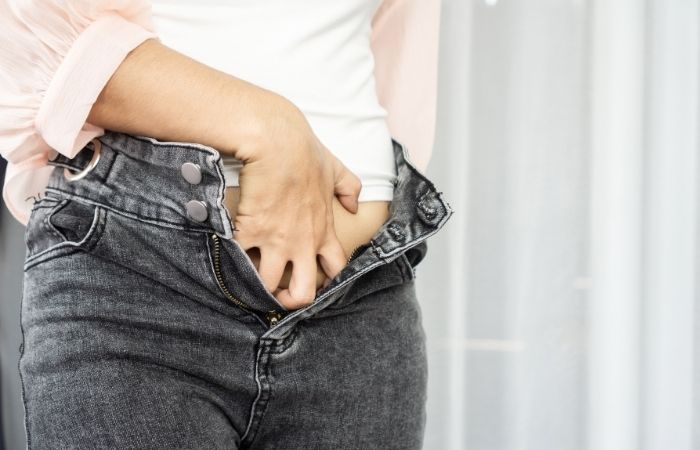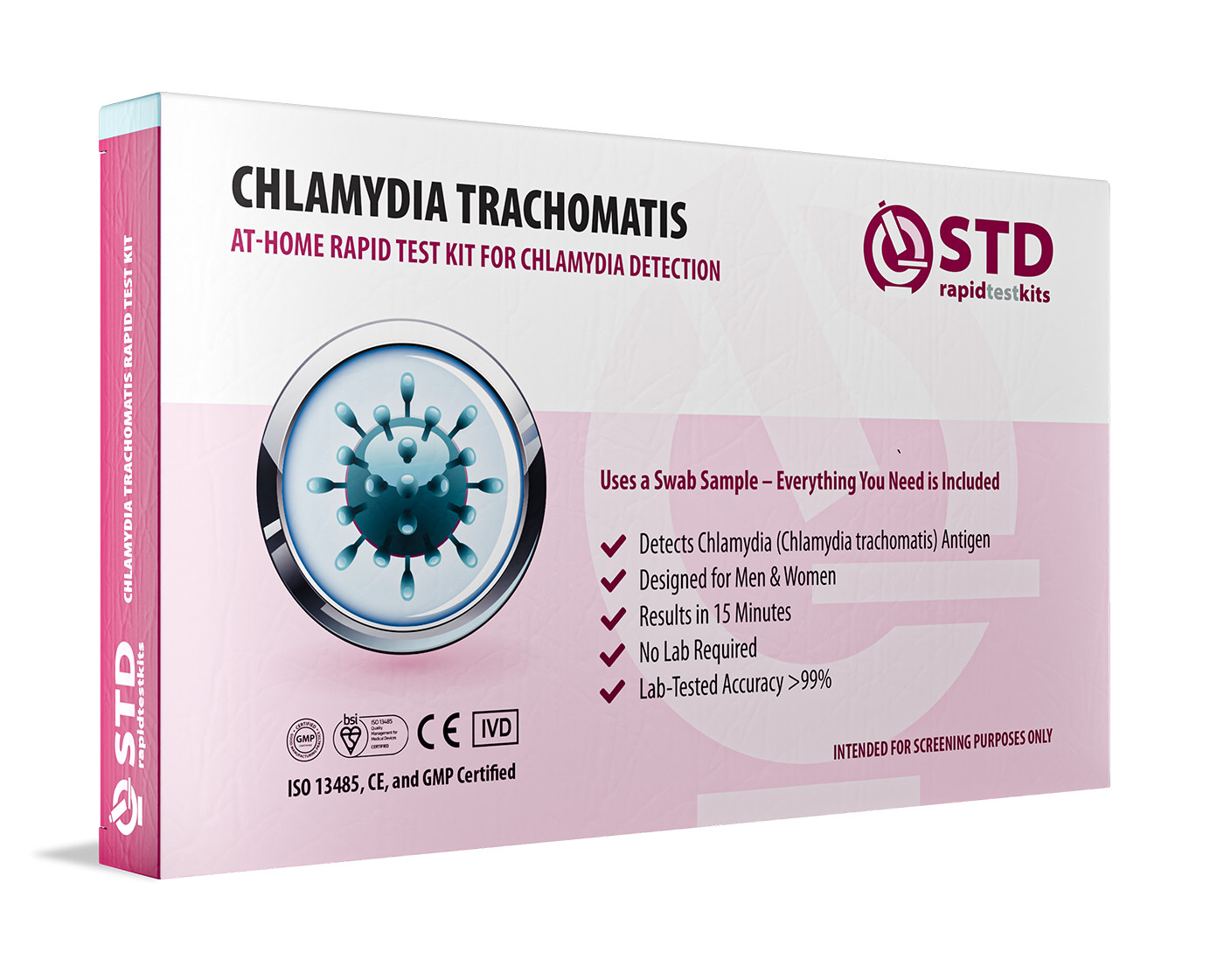What Makes Chlamydia So Sneaky for Women?
Chlamydia trachomatis prefers the delicate columnar cells lining the cervix. Because the cervix has fewer pain nerves than, say, your bladder, early infection often feels like… nothing. A 2025 Lancet Regional Health meta-analysis says up to 70 % of female cases stay symptom-free until complications hit. That’s why public-health campaigns call it “the silent STI.”
Quick refresher from our guy-focused checklist: men often notice a burn first;women often notice nothing. Different plumbing, different alarm bells, same bacterium.

Women are also reading: How Chlamydia Affects Men and Women Differently (and What to Do)
Why Women Miss the Early Signals
Pain during sex? Could be dryness. Spotting mid-cycle? Maybe a wonky period. Burning pee? UTI season again. Gynecologist Dr. Keisha Patel told Women’s Health Daily (Jan 2025),
“Women normalize minor vaginal changes all the time. It’s cultural conditioning, ‘deal with it’, but it delays diagnosis.”
That’s exactly why discreet, at-home screening bridges the gap between suspicion and certainty.
Early Red-Flag Symptoms
- Abnormal yellow vaginal discharge: Often watery or mucus-like, occasionally with a mild odor.
- Burning when you pee: Feels like a classic UTI but antibiotics for UTIs won’t fix chlamydia.
- Increased urge to pee: Bladder irritation without the urgency relief you get after urinating.
- Mild vaginal itching: A light, persistent tickle, not the intense itch of a yeast infection.
If these ring familiar, order an at-home chlamydia test kit before assumptions snowball. No speculum, no lecture, just facts.
Spotlight on Discharge: Color, Consistency & Smell
Not all discharge is doom. But here’s a quick color code:
- Egg-white clear: Ovulation, normal.
- Milky white: Luteal-phase progesterone rise, normal.
- Pale yellow and watery: Possible chlamydia.
- Chunky cottage cheese: Yeast, not chlamydia.
- Gray with fishy smell: Bacterial vaginosis; can coexist with chlamydia.
When in doubt, swap Dr. Google for an actual lab result.
Check Your STD Status in Minutes
Test at Home with RemediumChlamydia Test Kit

 For Men & Women
For Men & Women Results in Minutes
Results in Minutes No Lab Needed
No Lab Needed Private & Discreet
Private & DiscreetOrder Now $33.99 $49.00
Bleeding Between Periods & After Sex
Cervical inflammation makes blood vessels fragile. That’s why painless spotting after intercourse, or between periods, lands on so many chlamydia symptom lists. A May 2025 Pakistani cross-sectional study of PID patients found intermenstrual bleeding was the first noticeable clue for 38 % of participants. Don’t chalk it up to a rough romp.
UTI or STI? Decoding the Burn
Women get UTIs 30 times more often than men, so the brain defaults to “Ugh, another bladder infection.” But UTIs almost never come with yellow discharge or post-sex spotting. A quick urine dipstick can rule out UTI, but only a NAAT swab confirms chlamydia. Save yourself the merry-go-round of wrong antibiotics, test both.
Lower Belly, Back, or Hip Pain: PID’s Early Whisper
The bacterium can ascend from cervix to uterus and fallopian tubes, stirring pelvic inflammatory disease (PID). Symptoms include dull lower-belly ache, back twinges, or even hip pain during leg day. A Dutch 2024 cohort tracking 2 100 women with untreated chlamydia showed a four-fold increase in PID within 12 months. Catch it early, and doxycycline + metronidazole can slam the brakes.
From PID to Infertility: The Domino Effect
Once Chlamydia trachomatis invades the fallopian tubes, scar tissue may form, narrowing or sealing the passage. A 2024 JMPR review pegged the lifetime ectopic pregnancy risk at 6 % for women with two or more chlamydia-driven PID episodes, six times higher than baseline. Fertility specialist Dr. Lina Gomez warns, “Each untreated month invites microscopic scarring you can’t undo.”
Good news: Early treatment lowers infertility odds dramatically. Women in the same cohort who treated within 14 days of symptom onset saw no statistically significant fertility impact.

Women are also reading: The Biggest Myth in Lesbian Sex: “We Don’t Need to Worry About STDs”
Pregnancy & Chlamydia: Double Trouble
Pregnant? Chlamydia testing is routine at your first prenatal visit, if you make it there. Untreated infection raises premature rupture of membranes by 40 % and can cause chorioamnionitis. Newborns risk conjunctivitis or pneumonia. According to the CDC’s 2025 surveillance, 6 in 1 000 live births involve maternal chlamydia. Takeaway: screen before pregnancy, re-screen in the third trimester if at risk.
Testing Options Tailored for Women
- Cervical NAAT swab: Gold-standard accuracy; clinic only.
- First-catch urine: Easier, nearly as sensitive for cervical infections.
- Vaginal self-swab: Part of the dual chlamydia + gonorrhea kit; comfort at home.
Quote to remember: “Self-collection empowers women who fear pelvic exams,” says WHO STI lead Dr. Teodora Wi in the 2023 testing guidance.
Treatment: 2024 WHO vs. 2025 CDC Updates
The 2024 WHO guidelines favor doxycycline 100 mg twice daily × 7 days. The 2025 CDC bulletin aligns but offers azithromycin 1 g single dose for pregnant women. Key reminders:
- Partner therapy: The medicine works, but only if both of you swallow it.
- No sex for 7 days: Antibiotics need time to clear cervical mucus.
- Retest at 3 months: Reinfection is common, especially if partners weren’t treated.
Mental Load: Guilt, Blame & Disclosure
Counselor Jasmine Reyes told Psych Today (Feb 2025),
“Women often internalize STIs as moral failure, but infection is biology, not character.”
Use straightforward disclosure scripts similar to the ones in our men’s article, short, factual, solution-oriented. You deserve care, not shame.
Check Your STD Status in Minutes
Test at Home with Remedium10-in-1 STD Test Kit

 For Women
For Women Results in Minutes
Results in Minutes No Lab Needed
No Lab Needed Private & Discreet
Private & DiscreetOrder Now $189.00 $490.00
For all 10 tests
Prevention Checklist
- Barrier methods: Condoms/dental dams every time.
- Routine screening: Annual if under 25 or changing partners.
- Toy hygiene: Boil silicone toys or use fresh condoms.
- Dual testing: Chlamydia and gonorrhea often party together.
- Communication: Normalize asking partners, “When was your last STI test?”
Your 5-Step Action Plan
- Test today: Self-swab or urine kit.
- Treat promptly: Finish antibiotics.
- Retest in 3 months: Mark your calendar.
- Screen annually: More often with new partners.
- Share knowledge: Send this article, or the male checklist, to partners.
FAQ
1. Does chlamydia always cause symptoms in women?
No, around 70 % feel nothing early on, which is why routine testing matters.
2. Can chlamydia affect fertility?
Yes, untreated PID can scar fallopian tubes, raising infertility risk.
3. Is doxycycline safe while breastfeeding?
Current guidelines advise azithromycin instead during breastfeeding.
4. How soon after treatment can I try to conceive?
Wait until follow-up testing confirms clearance (usually 4 weeks post-antibiotic).
5. Does a Pap smear detect chlamydia?
No, Pap tests screen for cervical cancer, not STIs.
6. Can I douche to feel cleaner?
No, douching disrupts vaginal flora and can worsen infection.
7. Is chlamydia the same as gonorrhea?
No, different bacteria, but coinfection is common.
8. Will insurance cover at-home kits?
Most FSA/HSA plans reimburse; check your policy.
9. How long does it take symptoms to appear?
Anywhere from 7 days to several weeks post-exposure.
10. Should I get tested after sexual assault?
Yes, seek immediate medical care; prophylactic antibiotics are often offered.
Take Control of Your Health!
Spotting between periods, a sneaky burn, a nagging backache, small signs that chlamydia might be plotting bigger moves. But knowledge plus a discreet test equals control. Treat early, protect your fertility, and keep conversations open. Your body is talking; listen, test, heal.
Sources
1. CDC – Chlamydia Fact Sheet (2025)
2. WHO Chlamydia Treatment Guidelines (2024)
3. WHO STI Testing Guidance (2023)
4. Lancet Regional Health – Global Chlamydia Meta-analysis (2025)










